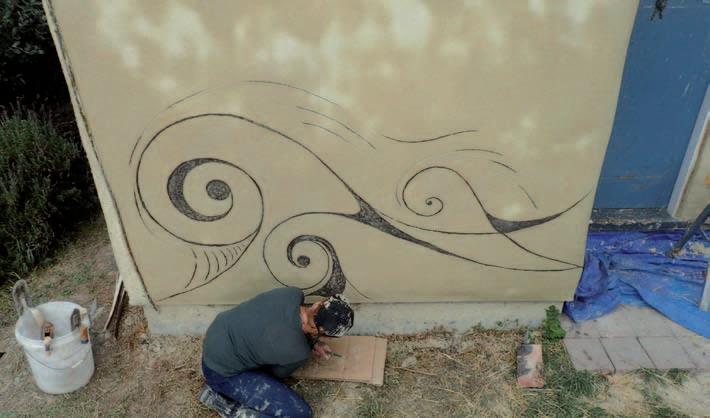
3 minute read
FROM THE CHAIR
This issue has a focus on the completed Earth Building Standards revision, the completion of which was largely eclipsed by the ongoing Covid 19 pandemic. As outlined later in this issue the standards are now published and available through Standards NZ although still to be cited officially by MBIE “as a means” to meet the code.
Kia Ora earth builders, I have already been involved to varying degrees in three straw bale house consents where the appendix in NZS 4299:2020 Appendix E (Informative section on Straw Bale Construction) has been referenced and accepted by three different councils as supporting the consent application. In practice, the feedback is that consenting officials are treating the revised standards as an acceptable solution and superseding the old standards, which are still the legal standards until the new ones are cited. So now that the standards revision is published and paid for, where to next for EBANZ? Details of this year’s conference are in this issue and this would be great to place to start some conversations about where EBANZ should focus its efforts. One of the topics front and centre is natural building education, and how EBANZ can facilitate and support this, especially given the opportunities from the current disruption to the tertiary sector. There is a discussion currently underway and if you would like to be involved please let me know. On another note, for those of us interested in composting toilets – our current build has a consented Joseph Jenkins style humanure composting toilet. Mike Copeland of Kiwi Pioneer Co Ltd. prepared the application and it went through consent at Hastings District Council with no issues. If you are not familiar with this system, then this issue’s what to read is The Humanure Handbook by Joseph Jenkins. The e-book is available free online, but it is worth having a hardcopy on your shelf. Search Humanure Handbook to find it. I believe that everyone on the planet should be locked in a room and not allowed out until they have read it! Please enjoy the great content in this latest issue of earthbuilding!
Advertisement
Pat Mawson
w f
Welcome to the wonderful world of natural building.
Spring 2020 TAKE A PEEK
INSIDE
STRAWBALE BACH Earth building update...

The Earth Building Association of Australia (EBAA) promotes the use of unfired earth construction.
6
EARTHBUILDING

The common feature in all earth Earth building is the practice of AUSTRALIA UPDATE building using unfired earth material. building techniques is that the material
Earth is used to construct walls, floors, used is subsoil that is composed of clay, roofs and even furniture, fireplaces and silt and sand, where clay is the binder ovens. It is a building technology with or ‘cementing’ ingredient, and that the an 11,000-year-old history and tradition, drying process is through the evaporative which is used worldwide. Today it is effect of sun drying. The methods and estimated that between one third to techniques used are as varied as the one half of the world’s population are people, the resources available and the currently housed in earth homes. climates in which they are used.
32
THE OWNER BUILDER 213 June/July 2019

© www.theownerbuilder.com.au
11
Earth building techniques
There are at least 12 methods of earth building used and these can be further divided into a total of at least 18 approaches. The following is a summary of what are perhaps the best known of the earth building techniques used in Australia today. This is by no means an exhaustive list, but provides a useful overview and starting point.
HEMP HOUSE NORTHLAND
18
STRAWBALE WORKSHOP

35











